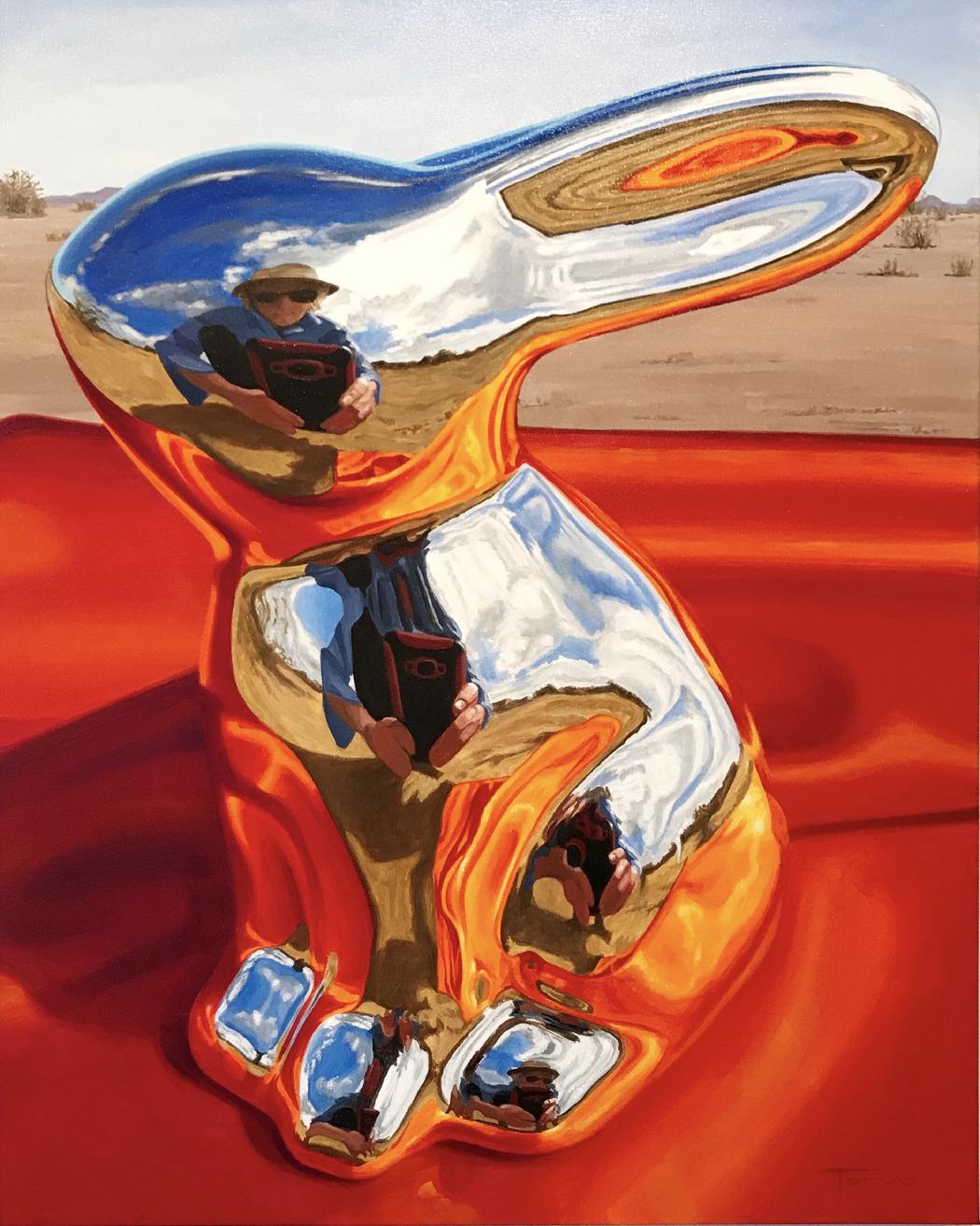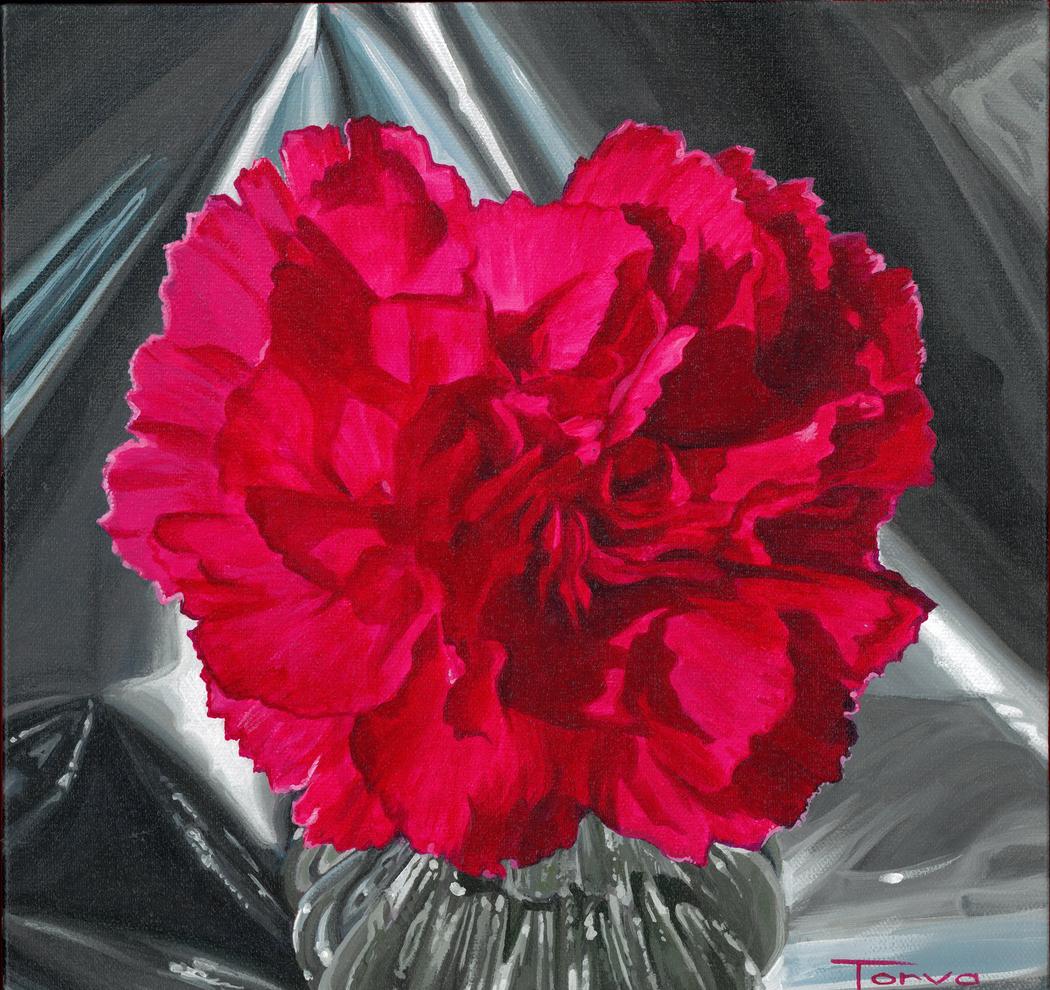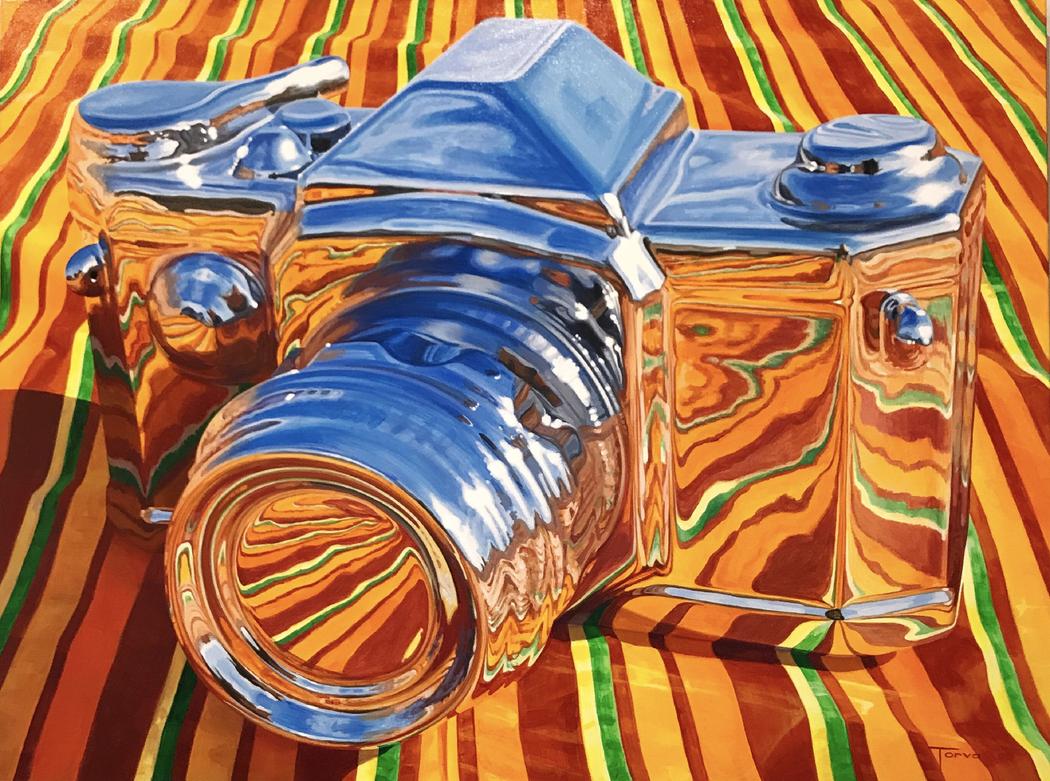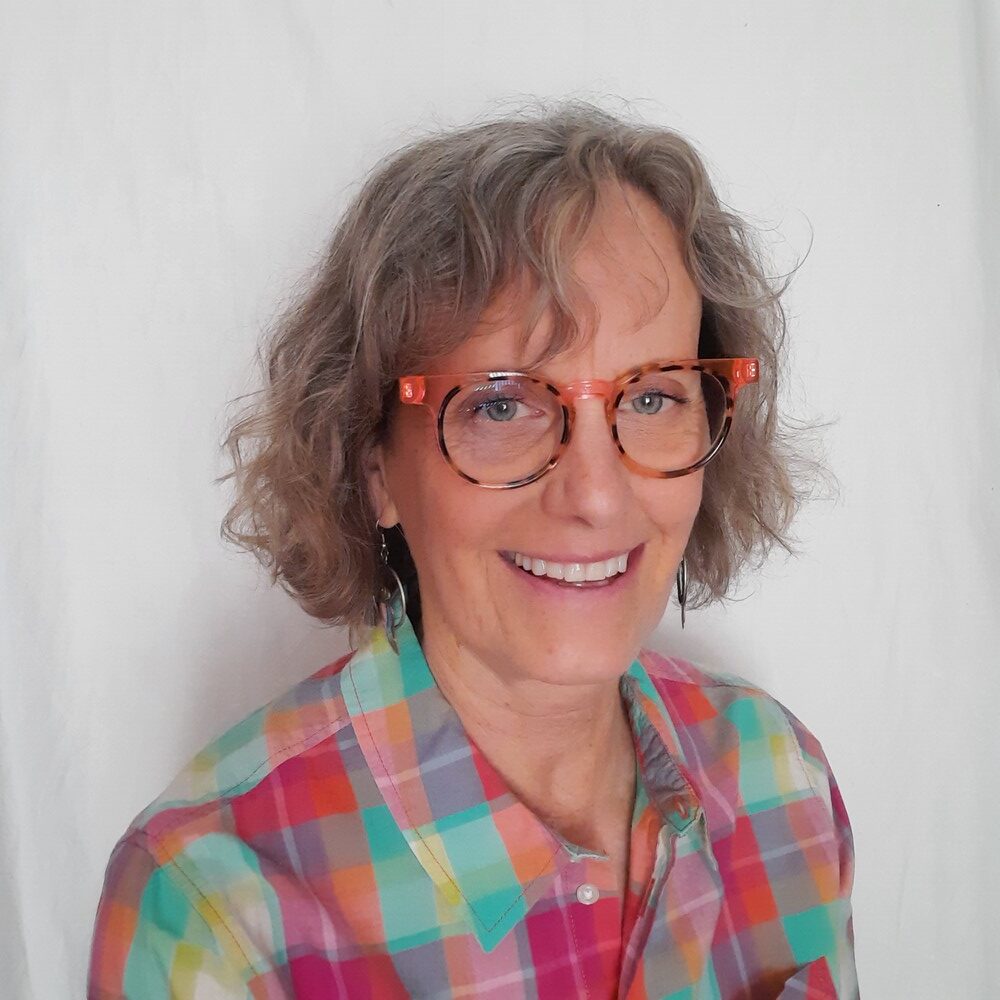Lucretia Torva
You’ve lived in Phoenix for over 25 years but grew up in Scotland and France — how have these different environments shaped your artistic perspective?
I am so grateful to have grown up in Europe. My mother made sure we traveled extensively, and we visited some of the greatest museums and architecture in Western art. Experiencing art in person is the only way to grasp the vision and value of the work. Especially in France, people respect culture and history. It is common for people to have knowledge of all the arts. This fact definitely set the stage for my love of art and it’s history.
Arizona offers an interesting contrast. Everything is much newer and the desert is sparse and unforgiving, yet beautiful. For me, contrast is poignant and it reveals truths that are not noticed without the clash of ideas and places.
What first drew you to painting as your main form of creative expression?
Drawing certainly came first. I had to learn to draw before painting. I feel my interest in painting came from seeing so many great paintings at an early age. I was around seven years old when we visited the Louvre Museum. I stood transfixed in front of “The Raft of the Medusa” by Théodore Géricault; the physical and emotional depth, the incredibly skilled painting technique, the storytelling and gigantice size. I felt I wanted to do something like it someday. It was very powerful. I was also drawn to the idea that from a distance, a painting could look like a scene or a real object, yet, up close, the brush marks were visible and it became nothing but lines, shapes and colors. It is magic.
 Lucretia Torva | Bunny Distortions | 2017
Lucretia Torva | Bunny Distortions | 2017
Your works often feature stunning reflective surfaces. What sparked your fascination with reflections and refractions?
I have always been captivated by artists’ renditions of our “reality”. Renee Magritte’s famous “The Treachery of Images” (the pipe with a statement that this is not a pipe) is brilliant and made me laugh when I first saw it. Our reality is based on consensus. Why shouldn’t we play with it and question it? I love the bending of patterns in folded fabric and it was natural for me to gravitate to reflections. A reflection is a distorted view of “reality”, which is open to interpretation anyway.
You work on both murals and traditional canvases — how does scale influence your process and what you want the viewer to feel?
I have been painting large paintings for a long time, well before painting murals regularly. Large paintings command and activate a space. They are difficult to ignore. I think the intrusive nature of a large painting is a good thing. Most people need a boost to get out of their every day routine. It was an obvious choice for me to be a mural painter. The activation of a large space and therefore a community is satisfying. To have hundreds of people get a glimpse of a colorful image in their everyday life makes me feel successful, makes me feel as if I make a difference in the world. Showing art in a gallery is great. Showing art on a street is a different version of great.
 Lucretia Torva | Deep Light | 2025
Lucretia Torva | Deep Light | 2025
The highly polished surfaces in your paintings reveal hidden details and even self-portraits. What role does the presence of the artist — literally reflected — play in your work?
It is important for me to create art that keeps on giving, that cannot be seen all at once. Lots of us are naturally attracted to “shiny things” and I wonder why that is? Some viewers try to decipher the reflections, as if they are a puzzle. Some just marvel at the shiny look. My reflection is usually well hidden simply because of the distortion, yet, it’s possible to figure it out. The amusing aspect of my reflection is that it can be very skewed. It seems to be a source of contemplation as well as entertainment for some viewers to investigate the reflections. The rumor is that all art is autobiographical, therefore it is fitting if I literally appear somewhere in my art.
 Lucretia Torva | Lucky | 2025
Lucretia Torva | Lucky | 2025
You’ve mentioned wanting viewers to feel both grounded and slightly unmoored. What emotions or thoughts do you hope they carry away after experiencing your paintings?
I find that many people are attracted to realistic painting. It substantiates their view of the world. Viewers often have one of two reactions to my work that excite me. Some people can’t believe it’s a painting. I receive questions about how I do it. Do I use chrome paint? Is it hard? How long does it take? The other reaction is how, from a distance, it looks like a photograph, yet up close, the brush marks are visible and it becomes a painting. Both of these reactions are questions about reality and the nature of art itself. I always want people to be entertained and even uplifted when they enjoy my work. When they walk away with some uncertainty about reality or what is possible, that’s a bonus!
 Lucretia Torva | Lining Up Nicely | 2018
Lucretia Torva | Lining Up Nicely | 2018
If you could paint a reflection anywhere in the world — any landscape, any city — what place would you choose next, and why?
The answer has to be Paris. I spent a semester abroad there and Paris symbolizes the epitome of artistic creation and exhibition. From my early encounter at the Louvre to Manet as a bridge between then and now and then the concept of a Salon des Refusés. It would be the honor of a lifetime to paint a mural of a reflective subject on a very public Parisian wall!


Leave a Reply